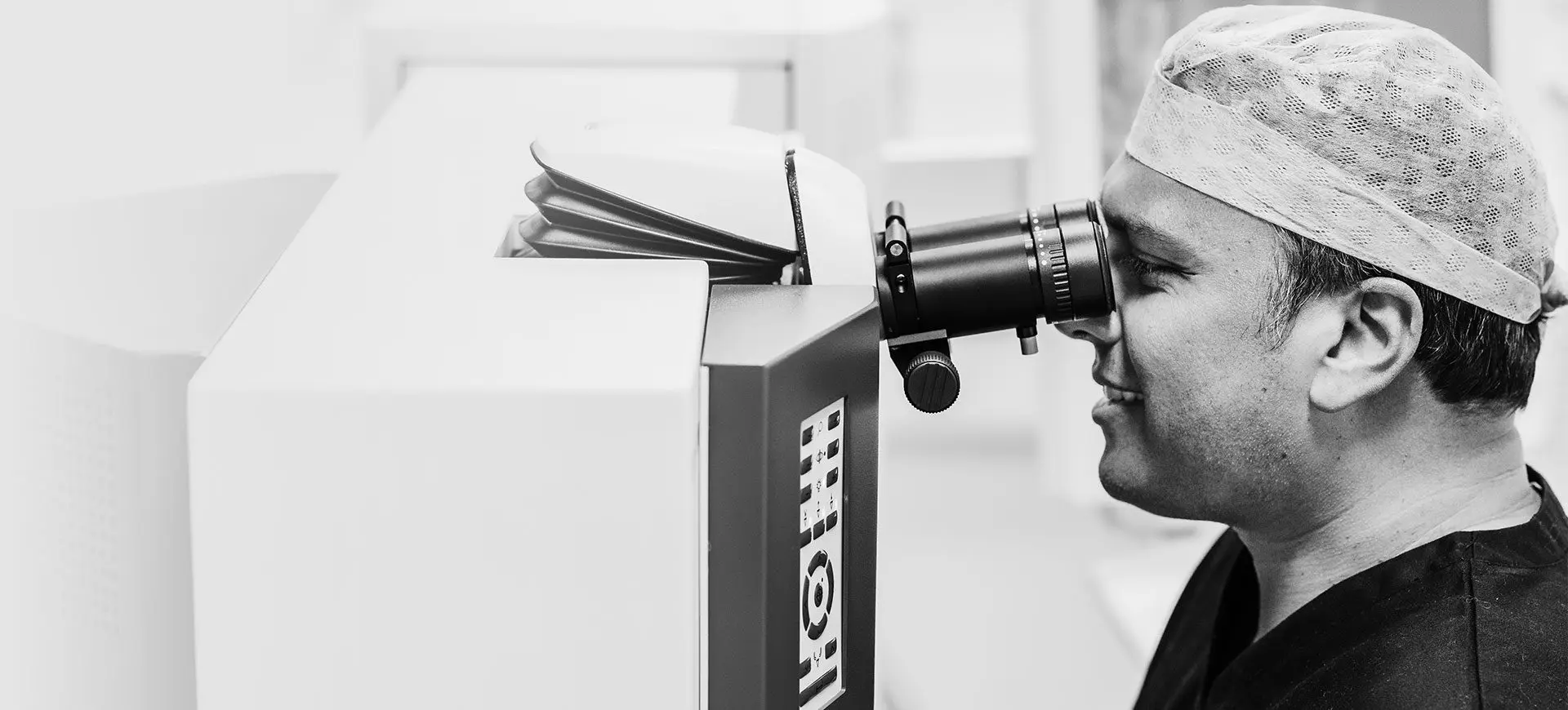Treatments
LASIK
LASIK has become most common form of laser vision correction in the world.
Excimer laser eye surgery works by reshaping the cornea, which is the transparent front of the eye. This encourages light rays entering the eye to focus successfully on, or close to the retina.
Z-LASIK involves the application of laser treatment to the deeper layers of the cornea under a protective flap, combining two different laser procedures. The result is a quicker return of vision and refractive stability following LASIK compared with LASEK or PRK.
More than 15 million LASIK procedures have been performed worldwide, since it was first introduced in the late 1980s and has now become the most commonly performed procedure in the world.
Book a Consultation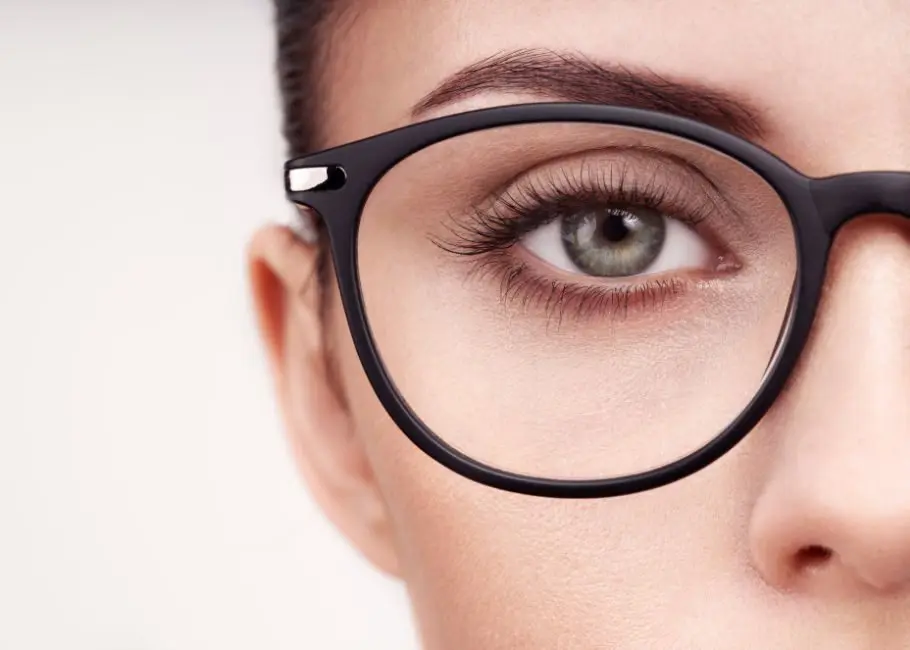
At a glance
Treatment Time
30 minutes
Treatment Anaesthesia
Eye drops
Treatment Downtime
Discussed at consultation
Treatment Frequency
Permanent
Treatment Results
Improved vision
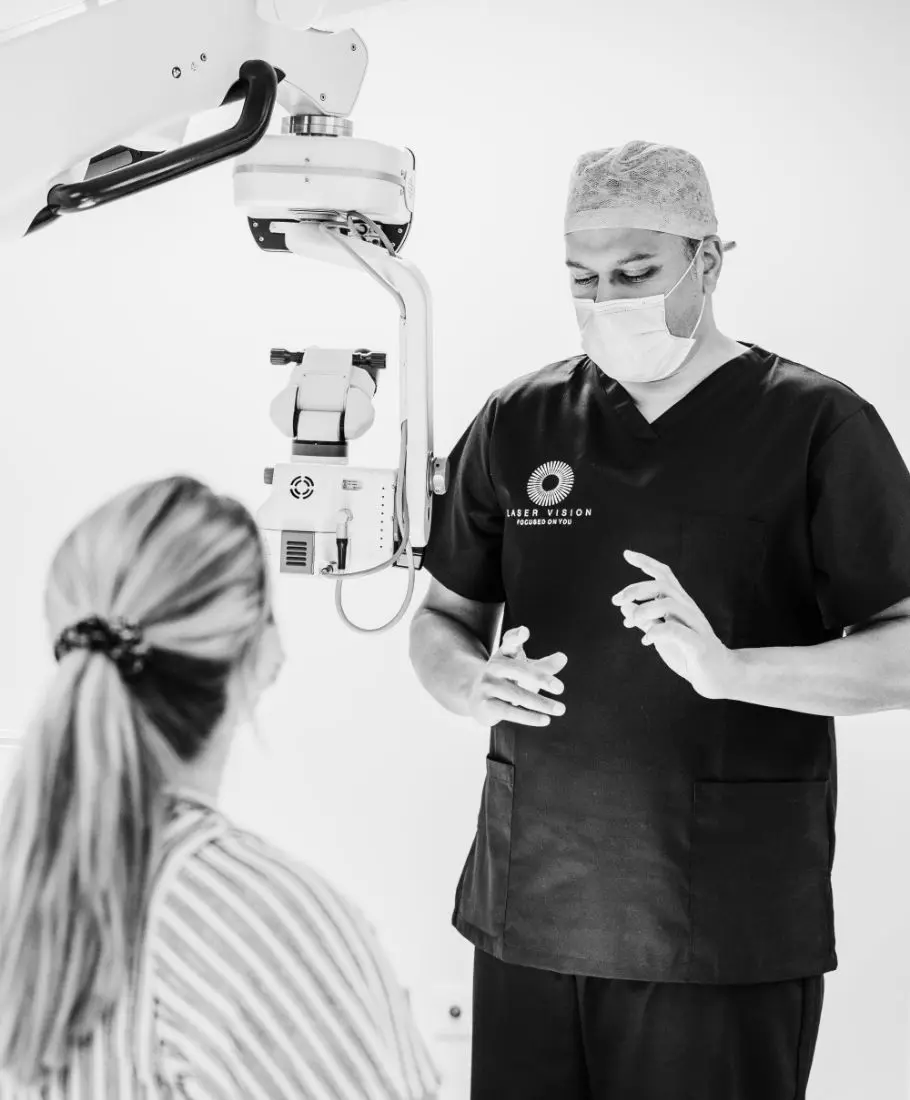
Treatment
Frequently asked questions
What happens during my procedure for Lasik?
Prior to the procedure, the team will spend some time checking the consent form and discussing the procedure, outlining what to expect. Should there be any anxiety, a gentle sedative can be taken orally prior to treatment.
After entering the laser suite, and laying down on the laser bed, a drop of anaesthetic is placed in the eye. A speculum is put in place to keep the eye open and tape protects the eyelashes. LASIK involves the use of 2 different lasers to treat the cornea. The first type of laser is called a femtosecond laser (Ziemer Z8) (http://www.ziemergroup.com ).This laser enables the procedure to be ‘blade-free’, enhancing safety and predictability. It is used to create a corneal flap, less than 1/10mm thin.
During this time the eye being treated is unable to see, this is normal and lasts for under 30 seconds. The flap is then lifted to expose the deeper tissue of the cornea.
The second laser, an excimer laser, is then used to gently change the shape of the cornea to the desired effect. The laser Rakesh Jayaswal uses is the WaveLight® Allegretto Wave® Eye-Q Laser (https://www.myalcon.com/products/surgical/wavelight-allegretto-wave-eye-q-laser/index.shtml ). The treatment is painless and typically takes less than 10 seconds. The flap is floated back into place and checked then eye drops are applied.
If the flap created is not judged to be satisfactory, the excimer laser treatment is not applied. It may be necessary to postpone the surgery, but this occurs only rarely. If it is not possible to create a flap using the laser, the surgeon may, using their professional judgment, offer the patient the opportunity to switch to a surface procedure e.g. LASEK.
What do I need to know post treatment?
The eye should not be painful after treatment although it may prickle a little and be watery for a few hours. Eyes are often very sensitive to light for several hours after treatment (photophobia) and sunglasses are recommended. A review is then performed the following day.
Vision normally begins to improve after a few minutes and moderate vision is often achieved by the following day. Within 1 to 4 weeks most treated eyes have clear vision but it can take up to 12 weeks for the best optical quality to be achieved. There will be an imbalance in vision between treatment of the first and second eyes if they are treated separately.
The creation of the corneal flap carries the risk of complications not present with surface laser treatment. In addition to the risk of an unsatisfactory flap being created there is a possibility that the flap may be created without leaving a hinge in which case it will need to be carefully repositioned and very rarely stitched into place. In extreme cases complications due to infection, corneal perforation or other damage to the corneal flap could be sight threatening and may require further corrective surgery.
What is Z-Lasik?
LASIK stands for Laser Assisted In Situ Keratomileusis.
It has become most common form of laser vision correction in the world. This is due in part to the fact that it is performed under a protective layer of corneal tissue, meaning there is less surface area to heal and less risk of corneal haze and scarring. It also allows for a more rapid visual recovery. LASIK is able to treat a broad range of refractive errors.
The goal of LASIK is to reduce a patient’s dependence on their glasses or contact lenses. Current research suggests that over 99% of patients reach the legal driving standard without glasses or lenses following LASIK treatment.
LASIK is a virtually painless procedure and most patients only need anaesthetic drops to numb the eye prior to having this performed. The majority of patients say they feel no pain at all, though some mention feeling mild pressure or vibration during their treatment. Following the treatment there may be mild discomfort, but this is usually relieved by the use of the drops given at the time of the procedure, and by resting.
The procedure is very quick and involves creating a thin flap in the cornea and the laser is then applied to the mid corneal structure. The flap is then replaced and the vision recovers very quickly.
Z-LASIK uses the Swiss Z8 Femtosecond laser technology from Ziemer, arguably the most advanced femtosecond laser platform in the world.
What is Intra-Lasik?
The IntraLase Method has been used successfully on millions of eyes and we trust this advanced technology to deliver exceptional results.
The IntraLase Method is a 100% blade-free technique used to perform the critical first step in the LASIK procedure: creating the corneal flap. The creation of the corneal flap prepares the eye for the second step of the LASIK procedure, where an excimer laser is used on the inner cornea to correct vision.
Price
From £ 1950
Testimonials
What our patients say...
I am truly delighted with the service I have received with LaserVision. Everything was very well explained. My vision is now fantastic and no more glasses or contact lenses! Thank you all
Patient, Manchester Royal Eye Hospital
Dear Rakesh, Thank you so much for all your help and guidance. Your knowledge and expertise has been invaluable. Both myself and my family are enormously grateful for this life changing procedure.
Patient, Nuffield Health Guildford Hospital
Treatments
Related Treatments
Treatment
Cataract Surgery
Cataract surgery is one of the oldest surgical procedures recorded
View Treatment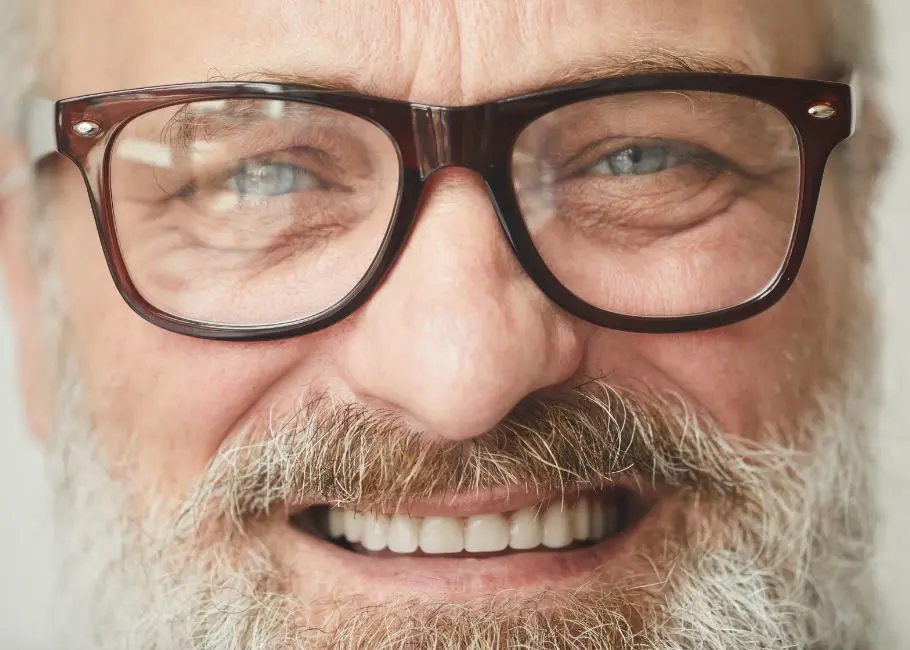
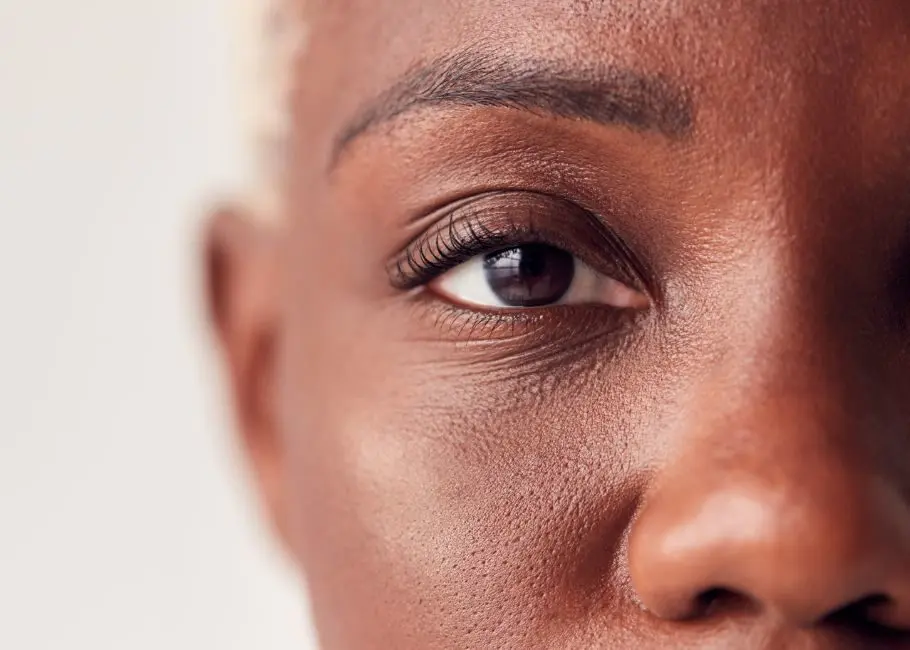
Treatment
LASEK
The LASEK procedure involves preserving the extremely thin epithelial layer
View TreatmentTreatment
LASIK
LASIK has become most common form of laser vision correction in the world.
View Treatment

Treatment
Cataract Surgery
Cataract surgery is one of the oldest surgical procedures recorded
View Treatment
Treatment
LASEK
The LASEK procedure involves preserving the extremely thin epithelial layer
View Treatment
Treatment
LASIK
LASIK has become most common form of laser vision correction in the world.
View Treatment